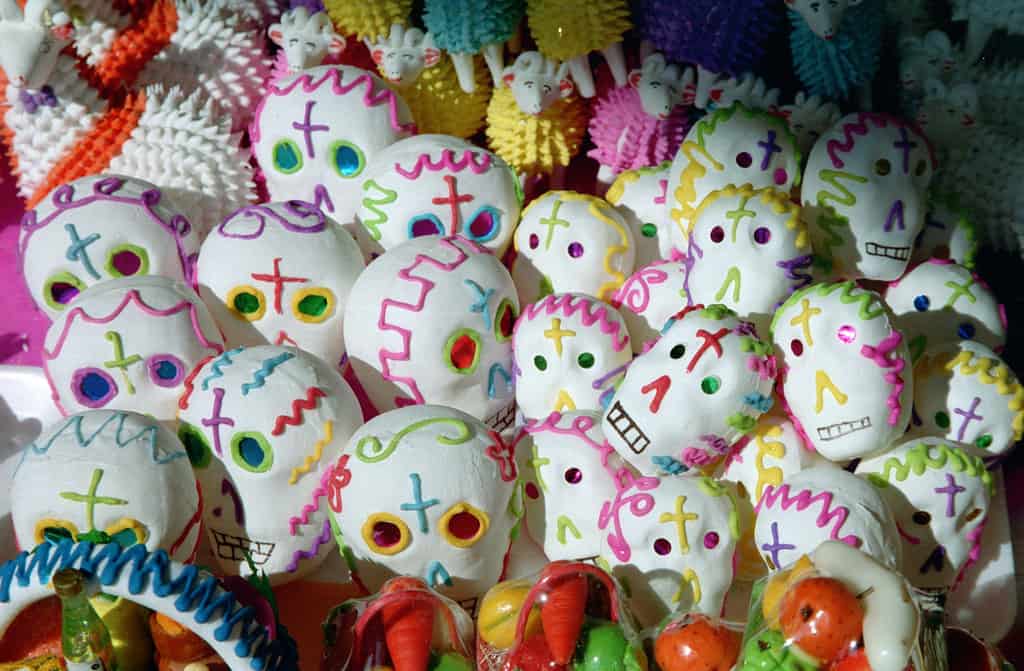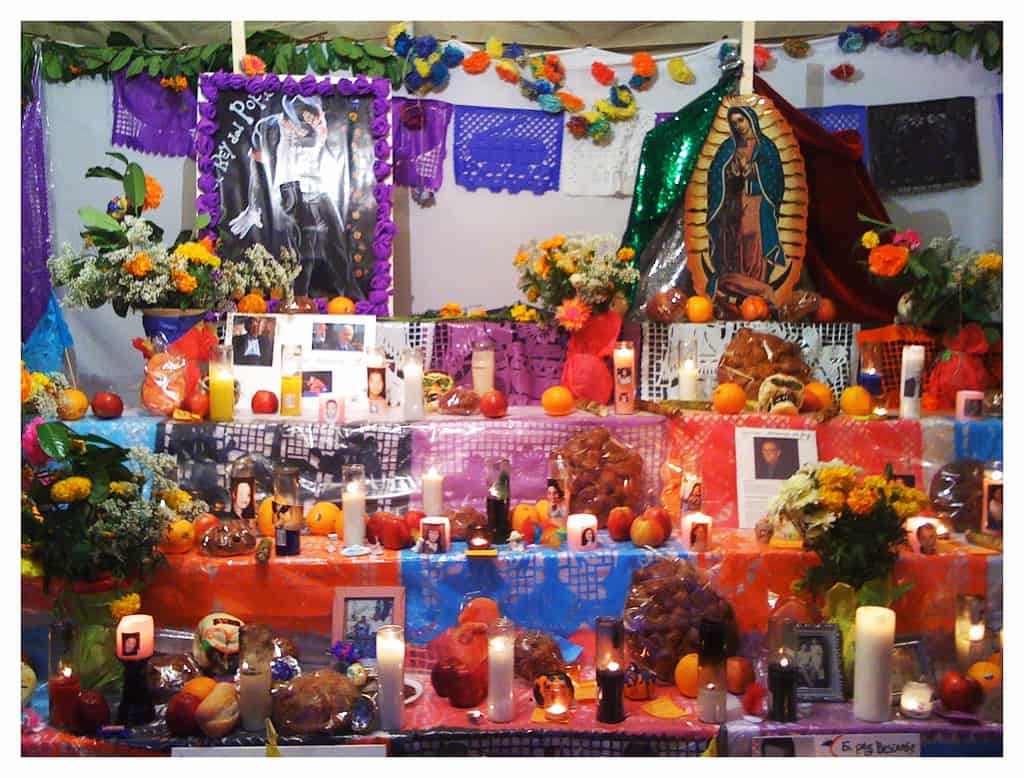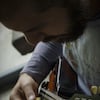Este artículo también está disponible en TJP Español
Candied skulls, pan de muerto, 1 and images of La Catrina are popping up all around, but no, my friends, these aren’t Halloween decorations, we’re getting ready to celebrate Día de los Muertos. As we wrap up Hispanic Heritage month I am reminded of my days as a Spanish high school teacher. This was the fun part where I didn’t have to worry about whether my students knew how to conjugate in the imperfect tense, but could share a bit of Latino culture with them. Growing up in LA in a predominantly Latino neighborhood, it was common to see decoraciones for Día de los Muertos right next to the decorations for Halloween. Today it is common that these two holidays get mistaken for one another.
I taught at at a predominantly Latino school, and I discovered pretty quickly that many of my students, whether of Mexican heritage or not, knew little about the tradition that make up Día de los Muertos. In class we’d build altarcitos to honor and remember our loved ones who had passed away, and share how the holiday is connected both to our culture and to our Catholic tradition of All Soul’s Day. All of which made teaching Día de los Muertos a ton of fun.
In addition to being fun, though, teaching these traditions became remarkably important to me. Because even though I grew up in a Mexican family, Día de los Muertos wasn’t something that I celebrated until I became a teacher myself, until I got older. Getting a bit older – and being a teacher – made me stop and recognize a profound need I hadn’t named before: a need to stay connected to my own cultural heritage and identity. As generations of Mexican-Americans become more and more assimilated into American culture, the particular traditions we have often become a little more distant to us. There’s a desire to want to fit in, and the allure of trick-or-treating and costumes sounds a lot more fun than building an altar. It’s in these small ways that we can start to be drawn away from the traditions that connect us to our faith; traditions like Día de los Muertos. As a Chicano,2 my cultural reality is wrapped up in my religious reality. Yet this is changing for a lot of my fellow young Latinos today.
Today, we are seeing a decline in Hispanic Catholics in the United States. A recent Gallup Poll study showed that between 2008 and 2012 there was an overall 4% decline in the number of Hispanic Catholics in the US. This decline in participation in religious practices is more steep for those between the ages of 18-29 than for those who are older. This is my generation, the generation of Mexican-Americans who have grown up in schools where Halloween is talked about more than Día de los Muertos – and nothing is mentioned of the connection between Halloween and All Soul’s day.
And all of this, the teaching of traditions in school, the statistics, the intersection of faith and culture, all of this leaves me questioning: Is there a way to help re-bridge the gap between our Mexican traditions and our Catholic faith? How can we do this for my generation, the young generation of Latinos, who are growing further away from the Church? Can it be done? Or will the assimilation that we experience the longer our families are in the US draw us away from our tradiciones, our cultura and our faith?
***
The cover image is by Flickr user bmeabroad and can be found here.
— — // — —
- Pan de muerto literally means “bread of the dead”, and is offered to those who have passed away on altars build for Dia de Los Muertos. ↩
- Chicano is a term that refers to Mexican-Americans, it was used to help give identity to those who were told that they weren’t Mexican enough or American enough. ↩



